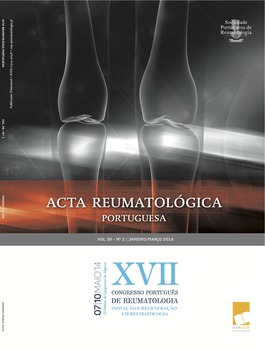Pharmacology of biosimilar candidate drugs in Rheumatology: a literature review
Authors
Araújo F, Cordeiro I, Teixeira F, Gonçalves J, Fonseca JE
Objective: To review current evidence concerning
phar macology of biosimilar candidates to be used in
rheumatology.
Methods: A PubMed search up to August 2013 was
performed using relevant search terms to include all
studies assessing pharmacological properties of biosimilar
candidates to be used in rheumatology. Data on
study characteristics, type of intervention, pharmacokinetics
(PK), pharmacodynamics (PD) and bioequivalence
ratios was extracted.
Results: Of 280 articles screened, 5 fulfilled our inclusion
criteria. Two trials, PLANETAS and PLANETRA,
compared CT-P13 and infliximab in patients with active
ankylosing spondylitis and rheumatoid arthritis, respectively.
PK bioequivalence was demonstrated in the
phase 1 PLANETAS trial by highly comparable area under
the curve (AUC) and maximum drug concentrations
(Cmax), whose geometric mean ratios fell be -
tween the accepted bioequivalence range of 80-125%.
Equivalence in efficacy and safety was demonstrated in
the phase 3 PLANETRA trial. Two phase 1 trials comparing
etanercept biosimilar candidates TuNEX and
HD203 in healthy volunteers showed a high degree of
similarity in AUC and Cmax, with respective geometric
mean ratios between PK bioequivalence range. The last
included trial referred to GP2013, a rituximab biosimilar
candidate, which demonstrated PK and PD bioequivalence
to reference product in three different dosing
regimens in cynomolgus monkeys.
Conclusion: Infliximab, etanercept and rituximab biosimilar
candidates have demonstrated PK bioequivalence
in the trials included in this review. CT-P13 has
recently been approved for use in the European market
and the remaining biosimilar candidates are currently
being tested in patients with rheumatoid arthritis.
Section:
Reviews





